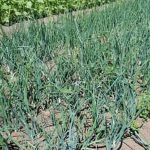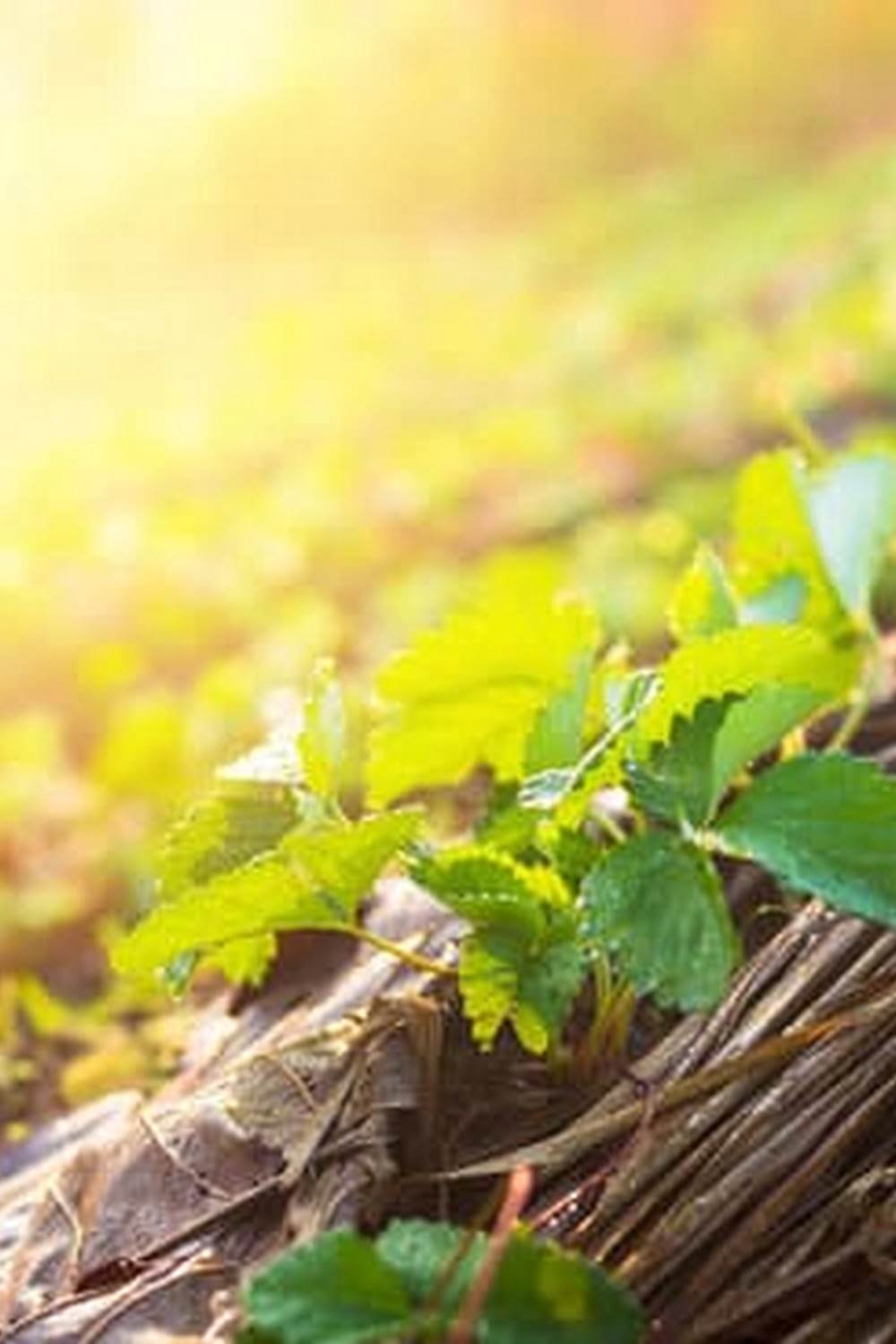Are you interested in starting your own vegetable garden but don’t know where to begin? A vegetable gardening starter kit is essential for beginners looking to embark on this rewarding journey. This comprehensive guide will walk you through the importance of having a starter kit and its numerous benefits, making it easier for you to get started on your gardening adventure.
For those new to gardening, a vegetable gardening starter kit provides the essential tools and supplies needed to establish and maintain a thriving garden. From selecting the right location and preparing the soil to choosing the best vegetables and managing pests, this kit contains everything you need to set yourself up for success. Whether you have limited space or are simply looking for a fun and fulfilling hobby, a starter kit can help make the process more manageable and enjoyable.
By investing in a vegetable gardening starter kit, beginners can build confidence in their gardening skills while learning about sustainable food production. With the right guidance and resources at your fingertips, you’ll be well-equipped to take on the challenges of growing your own vegetables and reaping the delicious rewards. So let’s dive into the world of vegetable gardening and discover how a starter kit can help you cultivate your green thumb.
Choosing the Right Location
When it comes to starting a vegetable garden, one of the most crucial decisions you’ll make is choosing the right location. The success of your garden largely depends on the spot you choose, as it directly impacts the amount of sunlight, water, and soil quality your plants will receive. Ideally, you should look for a location that receives at least 6-8 hours of direct sunlight each day.
Additionally, ensure that there is easy access to water for irrigation purposes. Good soil quality is also essential for a thriving vegetable garden. Look for well-drained soil with a pH level between 6 and 7, which is best for most vegetables.
In terms of specific spots on your property, consider areas that are close to your house or kitchen. This makes it easier for you to check on your plants regularly and harvest them when they’re ready. Additionally, try to select an area that is relatively flat and free from strong winds, as these can impact plant growth and health.
Location plays a critical role in ensuring the success of your vegetable garden. Take into consideration the amount of sunlight, water accessibility, and soil quality before settling on a spot for your garden. Proper planning and consideration in selecting the right location can help set you up for success in your vegetable gardening journey.
| Aspect | Recommendation |
|---|---|
| Sunlight | 6-8 hours of direct sunlight daily |
| Water Accessibility | Easy access to water for irrigation purposes |
| Soil Quality | Well-drained soil with pH level between 6 and 7 |
| Proximity to House | Close to house or kitchen for easy access and maintenance |
Essential Tools and Supplies
When starting a vegetable garden, having the right tools and supplies is essential for success. A well-equipped vegetable gardening starter kit can make the process of tending to your garden much easier and more enjoyable. From preparing the soil to harvesting your crops, having the right tools at your disposal can make all the difference in the outcome of your garden.
Basic Hand Tools
The most basic hand tools that every vegetable gardening starter kit should include are a sturdy shovel, a hand trowel, and a garden hoe. These tools are essential for preparing the soil, digging holes for planting, and removing weeds. Investing in high-quality hand tools will ensure that they last for many seasons to come.
Pruners and Gloves
Having a pair of sharp pruners or garden shears is important for keeping your plants tidy and healthy. You will also want to have a reliable pair of gardening gloves to protect your hands from thorns, prickly stems, and other potential hazards while working in the garden.
Watering Cans and Hose
Proper watering is crucial for the health of your vegetable plants, so it is important to have the appropriate watering equipment on hand. A watering can is ideal for gently watering seedlings and young plants without disturbing their delicate roots. For larger gardens or areas that require more water, a hose with an adjustable spray nozzle may be necessary.
By ensuring that you have these essential tools and supplies in your vegetable gardening starter kit, you will be well-prepared to take on the challenges and joys of cultivating your own home-grown vegetables. With these items at your disposal, you can look forward to a successful growing season filled with bountiful harvests of fresh produce.
Selecting the Right Vegetables
When it comes to choosing the right vegetables for a starter garden, there are several factors to consider. Beginners should look for vegetables that are easy to grow and maintain, and that will provide a bountiful harvest. Some popular options for beginner vegetable gardeners include tomatoes, peppers, and lettuce.
Tomatoes
Tomatoes are a great choice for novice gardeners because they are relatively easy to grow and can be quite prolific. They thrive in sunny locations with well-draining soil and are usually started from transplants rather than seeds. There are many varieties of tomatoes to choose from, including cherry tomatoes, Roma tomatoes, and beefsteak tomatoes, so gardeners can select the variety that best suits their taste preferences.
Peppers
Peppers come in a wide range of flavors, shapes, and colors, making them an exciting addition to any vegetable garden. Like tomatoes, peppers require plenty of sunlight and warm soil to thrive. Beginners can start with sweet bell peppers or mild chili peppers before moving on to more exotic or hot pepper varieties.
Lettuce
Lettuce is one of the easiest vegetables for beginners to grow. It can be sown directly in the ground or in containers and prefers cooler temperatures and partial shade. With minimal effort, gardeners can enjoy a continuous harvest of fresh, crisp lettuce leaves throughout the growing season.
By selecting these easy-to-grow vegetables for their starter garden, beginners can gain valuable experience in planting, tending to plants, and harvesting their own produce while enjoying a delicious bounty at the end of the growing season. A vegetable gardening starter kit should always include these popular options as they are considered basic components essential for anyone starting their own vegetable garden journey.
Soil Preparation
When it comes to vegetable gardening, one of the most critical steps is soil preparation. Adequate soil preparation ensures that your plants have the best possible environment in which to grow and thrive. Whether you’re working with an existing garden plot or starting from scratch, taking the time to prepare your soil will pay off in healthy, productive plants. Here are some important steps involved in getting your soil ready for planting:
- Conduct a Soil Test: Before planting anything, it’s essential to know what type of soil you’re working with. A simple soil test can provide valuable information about the pH levels, nutrient content, and composition of your soil. There are DIY soil testing kits available, or you can send a sample to a professional lab for analysis.
- Amending the Soil: Once you have a better understanding of your soil’s composition and nutrient levels, you can make any necessary amendments to improve its quality. Common amendments include organic matter like compost or well-rotted manure to enhance fertility and structure. Additionally, you may need to adjust the pH levels by adding materials such as lime or sulfur.
- Tilling and Conditioning: After testing and amending your soil, it’s time to till and condition it for planting. Tilling helps loosen compacted soil and improve drainage while conditioning incorporates any added amendments evenly throughout the topsoil.
Properly preparing your soil sets the stage for success in your vegetable garden. By taking the time to understand and improve your soil quality, you’ll be laying a solid foundation for healthy plant growth and abundant harvests. With the right approach to soil preparation, you’ll be well on your way towards enjoying a thriving vegetable garden.
Planting and Maintenance
Planting and maintaining a vegetable garden requires attention to detail and patience. Whether you’re starting from seeds or seedlings, proper care is essential for growing healthy and bountiful crops. Here are the key steps to follow for successful planting and maintenance of your vegetable garden:
- Start with high-quality soil: Before planting, make sure the soil is well-prepared. This includes testing the soil pH and adding any necessary amendments, such as compost or fertilizer, to ensure optimal growing conditions for your vegetables.
- Planting seeds or seedlings: Follow the instructions on the seed packets or plant tags for specific spacing and depth requirements. Whether you’re sowing seeds directly into the ground or transplanting seedlings, proper planting techniques will set the stage for healthy growth.
- Proper watering: Consistent watering is crucial for a successful vegetable garden. Different plants have different water needs, so it’s important to understand the specific requirements of each vegetable you’re growing. Mulching around plants can help retain moisture in the soil and reduce water evaporation.
To ensure ongoing care for your vegetable garden, regular maintenance tasks are necessary to keep your plants healthy and thriving:
- Weeding: Regularly removing weeds from your garden helps prevent them from competing with your vegetables for water, nutrients, and sunlight.
- Fertilizing: Providing supplemental nutrients to your plants throughout the growing season can help promote healthy growth and increase yields. Consider using organic fertilizers for a more sustainable approach.
- Mulching: Applying a layer of mulch around your plants helps suppress weeds, retain soil moisture, and regulate soil temperature. Organic mulches like straw or bark also break down over time, contributing valuable organic matter to the soil.
By following these planting and maintenance guidelines, you’ll be well on your way to enjoying a successful vegetable garden filled with delicious homegrown produce. Remember that having a well-equipped vegetable gardening starter kit will make these processes much more manageable as well.
Pest and Disease Management
When starting a vegetable garden, it’s important to be prepared for the possibility of pests and diseases that can affect your plants. One essential component of a vegetable gardening starter kit is having the knowledge and tools to prevent and manage these issues. By being proactive and attentive, you can help ensure the success of your garden and protect your plants from harm.
One key tip for preventing pest infestations in your vegetable garden is to practice good gardening hygiene. This includes keeping the garden clean and free of debris, which can harbor pests and diseases. Additionally, regularly inspecting your plants for signs of trouble can help you catch any issues early on, before they have a chance to spread.
There are also several natural pest control methods that can be incorporated into your vegetable gardening starter kit. For example, companion planting involves growing certain plants together to repel pests or attract beneficial insects. Additionally, using organic pest control products like neem oil or insecticidal soap can help keep pests at bay without relying on harsh chemicals that may be harmful to the environment.
In terms of disease management, it’s important to follow best practices for watering and fertilizing your plants to prevent common diseases like powdery mildew or root rot. Proper spacing between plants can also help improve air circulation, reducing the risk of disease.
In some cases, removing infected plants or plant parts may be necessary to prevent the spread of disease throughout the garden. By staying informed about potential threats and taking proactive measures, you can keep your vegetable garden healthy and thriving.
Harvesting and Enjoying
In conclusion, starting a vegetable garden is an incredibly rewarding experience, and having a vegetable gardening starter kit can make the process much easier for beginners. Selecting the right location with adequate sunlight, water, and high-quality soil is crucial for the success of your garden. Additionally, having essential tools and supplies such as shovels, pruners, gloves, and watering cans will ensure that you are well-equipped to care for your plants.
Once you have prepared the soil and planted your chosen vegetables, it is important to provide ongoing care and maintenance. This includes proper watering, preventing and managing common pests and diseases, and knowing when to harvest your vegetables. Harvesting at the right time ensures that your produce is flavorful and ready to enjoy.
Finally, storing and enjoying the fruits of your labor is one of the most satisfying aspects of vegetable gardening. Whether you choose to cook with your freshly harvested vegetables or simply enjoy them fresh from the garden, the satisfaction of growing your own food is unmatched. With the right knowledge and tools in hand from a reliable vegetable gardening starter kit, you’ll be well on your way to successfully growing a bountiful garden.
Frequently Asked Questions
What Should I Put in My Beginner Vegetable Garden?
When starting a vegetable garden, it’s important to choose easy-to-grow vegetables like tomatoes, lettuce, carrots, and radishes. These vegetables don’t require a lot of maintenance and are perfect for beginners.
What Is a Good Starter Vegetable to Grow?
One good starter vegetable to grow is the humble and versatile tomato. They are relatively easy to grow, can be grown in pots or in the ground, and provide a bountiful harvest throughout the season.
What Is the Best Size Vegetable Garden for a Beginner?
The best size vegetable garden for a beginner really depends on available space and time commitment. Starting with a small 4×4 or 4×8 foot plot can be manageable and allow for experimentation without feeling overwhelmed by a larger space.

If you’re looking to get into vegetable gardening, or are just looking for some tips on how to make your current garden better, then you’ve come to the right place! My name is Ethel and I have been gardening for years. In this blog, I’m going to share with you some of my best tips on how to create a successful vegetable garden.





